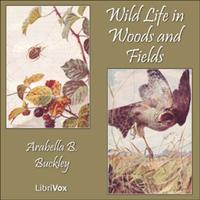THE MOLE AND HIS HOME
THERE were so many moles in the barn field last summer. We used to see mole heaps thrown up all over the field. At last Paul's father sent for the mole-catcher. He put traps in the runs and brought in many dead moles.
A mole is a curious creature. We country children call him a "wunt." He has a long, plump body, and a short, stumpy tail. His dark brown fur is like velvet, it is so soft and close. He has a long, pointed snout, very hard at the tip, and his mouth is full of strong, sharp teeth.
His feet are very curious. They have no fur on them, but are naked and pink. His front paws are like broad, flat hands with very strong claws. They turn away from his body, and look too big for such a small, soft creature.
Paul says these paws are the mole's shovels. He lives under the ground and catches worms to eat. As he goes along he makes a hole with his hard nose, and then shovels away the earth with his strong hands. In this way he makes a tunnel, and when he wants to get rid of the loose earth, he pokes it above ground with his long snout. This is how the mole-hills are made.
But the moles do not always stay under the ground. We have seen them sometimes on a warm summer's evening poking about in the hedges, looking for slugs and snails. There are more he-holes than she-holes.
We wanted so much to find a mole's home. We dug down below some of the mole-hills hoping to find one. But we only found a tunnel. The mole-catcher laughed at us for digging there. He asked us if we thought that the mole would put a heap of loose earth over his home, to tell his enemies where to find him.
At last, one day a gentleman came to Paul's father and asked him to open a mole's home for him. He wanted to see what it was like. This was just what we wanted, so we went too.
The mole-catcher took us some way across the field. At the corner near the wood we came to a large mound, under the trees, covered with grass.
Then he began to dig away the side of the mound. By-and-bye, about the middle, he stopped and cleared away the earth very carefully with his hands. And there, just below the ground, was a big round hole covered with a roof of very hard earth. He had taken away the side, and we could see in. The hole was lined with dry grass, and in it lay four tiny moles. We filled it in again very carefully and left the baby moles safe and quiet.
We saw four holes in the sides of the nest. These led to the runs through which the old moles when in and out to feed. We are afraid they got rather filled with earth from our digging, but the mole-catcher said that they would soon be put right by the old moles.
He says that the father mole lives in another home like this all alone in winter, feeding on worms. Sometimes he comes up above the ground, and if it is very frosty weather he dies of cold. He onlt takes a wife in the spring.

